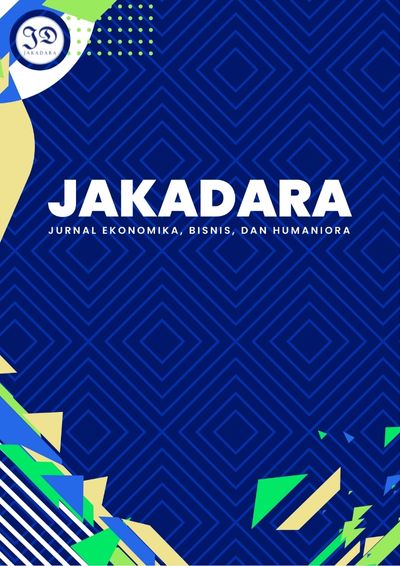Analysis of Maxims Used by Receptionists at Hotel Rimbun Canggu: A Pragmatics Study
Main Article Content
Abstract
This study aims to analyze the principles and the degree of maxims found at receptionists. The theory of pragmatics purpose by Yule is linguistic rules in lingual interaction, the rules governing their actions, their use of language, and their interpretations of the actions and utterances of the interlocutor. The method was conducted and the data was taken using descriptive qualitative research using observation and documentation methods. The results that found data to Analysis of Maxims Used by Receptionists at the Hotel Rimbun Canggu: A Pragmatics Study, this research uses 20 data, the first of which is the maxims consisting of the maxim of wisdom with used 3, the maxims of generosity with use 2, the maxims of appreciation with used 3, humility maxims with used 2, consensus/conformity used 3, and the maxim of sympathy uses 3. So, there are 6 maxims used by the receptionist and the data used is 16 data. While the second is the maxims of degree which consists of maxims of quantity, maxim of quality, maxim of relevance, and maxims of manner. The degree of maxims found uses 1 data each, so a total of 4 data is found from the conversations that occur at the receptionists
Article Details

This work is licensed under a Creative Commons Attribution-NonCommercial-ShareAlike 4.0 International License.
![]()
This work is licensed under a Creative Commons Attribution-NonCommercial-ShareAlike 4.0 International License.
References
Agustia, K. T. S., & Putri, N. L. G. M.2020. The Types of Directness and Internal Modification on Request Strategies: A Pragmatic Study. LITERA: Jurnal Litera Bahasa Dan Sastra, 6(2).
Akintoye, A.2015. Developing theoretical and conceptual frameworks. In EDMIC research workshop. Ile-Ife: Faculty of Environmental Design and Management, Obafemi Awolowo University, Ile-Ife, Nigeria.
Brown, P., Levinson, S. C., & Levinson, S. C. 1987. Politeness: Some universals in language usage (Vol. 4). Cambridge university press.
Bismantara, M. Y., Padmadewi, N. N., & Saputra, I. N. P. H.2013. A Pragmatic Analysis Of The Advertising Language In The Billboard Advertisements. Jurnal Pendidikan Bahasa Inggris undiksha, 1(1).
Creswell, J. W. 2010. Mapping the developing landscape of mixed methods research. SAGE handbook of mixed methods in social & behavioral research, 2(0), 45-68.
Creswell, J. W.2014. A concise introduction to mixed methods research. SAGE publications.
Echols, J. M., & Shadily, H.1998. Kamus Indonesia Inggris: An Indonesian-English. Jakarta: PT. Gramedia Jakarta.
Fauzi, A., Andayani, A., & Rohmadi, M.2021. Measuring the Use of Politeness in Language on the Demonstration Poster International Women’s Day 2020 (Pragmatic Studies). International Journal of Multicultural and Multireligious Understanding, 8(6), 77-88.
Firdaus, R. S., & Simatupang, E. C. 2022. The Maxim of Politeness in The Squid Game Film Series: A Pragmatic Study. Ethical Lingua: Journal of Language Teaching and Literature, 9(1), 363-370.
Hifzul, A., Rafli, Z., & Nuruddin, N. 2020. Politeness speech act in the movie character “Toni Erdmann" by Maren Ade: A Pragmatic study and its relevance in learning German at school. Journal of Applied Studies in Language, 4(1), 79-89.
Hookway, C. 2012. The pragmatic maxim: Essays on Peirce and pragmatism. Oxford University Press
Martin, J. 1991. Human Relation for the Hospitality Industry. Van Noostrand Reinhold: English.
Kartikawati, V., Haryadi, H., & Rokhman, F. 2019. The Form of the Language Politeness of State Officials in Q and A Metro TV Talkshow: Pragmatic Analysis. Seloka: Jurnal Pendidikan Bahasa dan Sastra Indonesia, 8(3), 50-56.
Kurniadi, S. 2021. A Gricean Maxim Analysis in Teaching and Learning Process at Higher Level Education. Jurnal Inotera, 6(2), 112-118.
Leech, Geoffery.2011. Prinsip-Prinsip Pragmatik. Translated by Oka M.D.D. 1993. Jakarta: Universitas Indonesia Press.
Leech, G. N.2014. The pragmatics of politeness. Oxford Studies in Sociolinguis. Ningsih, R., Boeriswati, E., & Muliastuti, L. 2019, August. Language politeness: Pragmatic-sociocultural perspective. In Proceedings of the International Conference on Education, Language and Society (Vol. 426431).
Olshewsky, T. M. 1983. Peirce's Pragmatic Maxim. Transactions of the Charles S. Peirce Society, 19(2), 199-210.
Pfister, J.2010. Is there a need for a maxim of politeness? Journal of Pragmatics, 42(5), 1266-1282.
Prativi, N. M. B. D., Budiarsa, M., & Erawati, N. K. R. 2019. Principle of politeness in the use of Hairyo Hyougen in Japanese drama: A pragmatic study. American Journal of Humanities and Social Sciences Research (AJHSSR), 3(9), 67-72.
Rahardi, R. K. 2017. Pragmatic phenomena constellation in specific culture dimension language study. International Journal of Humanity Studies (IJHS), 1(1), 84-92.
Raihany, A., & Rabbianty, E. N. 2021. Pragmatic politeness of the imperative speech used by the elementary school language teachers. OKARA: Jurnal Bahasa Dan Sastra, 15(1), 181-198.
Rosyidha, A., Afdiyani, I. N., Fatimah, A. D., & Nisa, I. 2019. Rethinking Politeness Principle in Pragmatics Study. Journal of Pragmatics Research, 1(1), 23-29
Sugiyono.2018.Metode penelitian kuantitatif,kualitatif, danR&D. Bandung:Alfabeta.
Sumbayak, L., & Nasution, J. 2022. AN ANALYSIS OF TEACHERS’LANGUAGE POLITENESS DURING TEACHING ENGLISH. Jurnal Bahasa Indonesia Prima (JBIP), 4(1), 215-225.
Turner, K. 1996. The principal principles of pragmatic inference: politeness. Language Teaching, 29(1), 1-13..
Wijana, I Dewa Putu.1996. Dasar-dasar Pragmatik. Yogyakarta: Penerbit Andi
Yaqubi, M., Saeed, K. M., & Khaksari, M. 2016. Conversational maxim view of politeness: Focus on politeness implicatures raised in performing Persian offers and invitations. Theory and Practice in Language Studies, 6(1), 52.
Yule, G. 1996. Pragmatics. New York Oxford University Press
Yule. 2014. Pragmatik.Yogyakarta: Pustaka Belajar.
